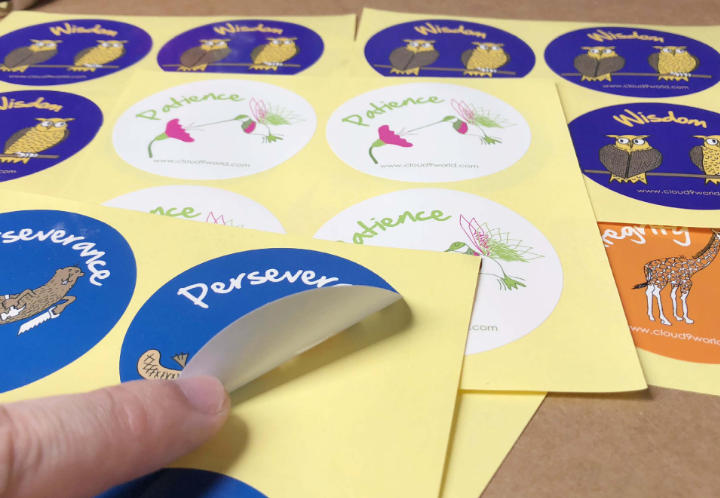Small self-adhesive labels often represent a significant part of a company’s image and brand, playing a crucial role in demonstrating product quality and stimulating consumer purchasing desire. So, what are some things to keep in mind when choosing self-adhesive label printing materials? We’ve compiled some tips to help you.

1. For cylindrical bottles, especially those with a diameter less than 30mm, choose the material carefully.
2. If the label is too large or too small, perform a test.
3. If the object to be labeled has an irregular surface, or even a spherical surface, specific considerations apply to the type of label material, thickness, and adhesive.
4. Rough surfaces, such as corrugated cardboard, can affect labeling, as can varnish on the corrugated cardboard surface.
5. When applying labels using an automatic labeling machine, perform a test labeling test if necessary.
6. Even if the label is applied at room temperature, be aware of possible high temperatures during export, transportation, and use.
7. Water or oil environments can affect the properties of the adhesive. Pay attention to the label’s environment and temperature.
8. Soft PVC surfaces can sometimes bleed plasticizers. Pay special attention to selecting the right adhesive.
To minimize the risk of self-adhesive label printing failures due to quality issues with the adhesive material itself, carefully inspect the surface quality of the adhesive material before printing to prevent defects that could cause quality issues. These defects can be discovered before printing.
1. Check the adhesive material for burrs: Smooth, intact edges of self-adhesive rolls are essential for ensuring high-quality self-adhesive label printing. Therefore, before printing, carefully inspect the cut edges of the self-adhesive roll for burrs and damage from improper storage and transportation. Roll the self-adhesive roll down 4-5 times and carefully inspect the longitudinal edges.
2. Check the adhesive material for cracks: When cutting self-adhesive material, improperly adjusted cutters or insufficiently sharp blades can cause cracks in the face or backing paper. Fibers pulled from these cracks can become trapped by the adhesive. Cracks can occur continuously or randomly. Self-adhesive rolls may have cracks on one or both sides. Therefore, carefully inspecting the backing and face paper for small cracks before printing on the adhesive material is not necessary.
Next, take a sample sheet that has passed the above inspection, tear it off the backing paper, and re-inspect the backing paper for cracks. Cracks can be very small and only visible after separating the backing paper from the top paper. It’s important to note that during the printing process, ink and adhesive gradually accumulate on the press’s paper guide rollers, which can also cause cracks on the edges of the self-adhesive material. Therefore, even after printing has begun, these issues should not be ignored.
3. Check the self-adhesive material edges for adhesion and silicone oil leakage on the backing paper: Adhesive edge adhesion or silicone oil leakage in certain areas of the backing paper can cause the face paper to break during waste removal, preventing normal production. Therefore, before printing, take a section of self-adhesive material approximately 1 meter long and manually peel it off to check for any areas that do not peel smoothly or evenly. Adhesion between the face paper edge and the backing paper typically occurs on the slitting rollers used to coat the self-adhesive material, typically only in the outer 7-10 meters. Therefore, if you see adhesion on the slitting roller edge of the self-adhesive material, don’t immediately assume that the entire roll is affected.
It’s also important to note that peeling lighter tissue paper (such as 60g/m² and 80g/m²) requires greater force than peeling heavier tissue paper. The lighter the tissue, the tighter it feels when peeling. Because of this, sometimes cutting custom-selected self-adhesive material to the desired shape isn’t possible at standard printing speeds.
4. Check the straightness of the slitting end of the self-adhesive roller and the uniform tightness of the reel.
